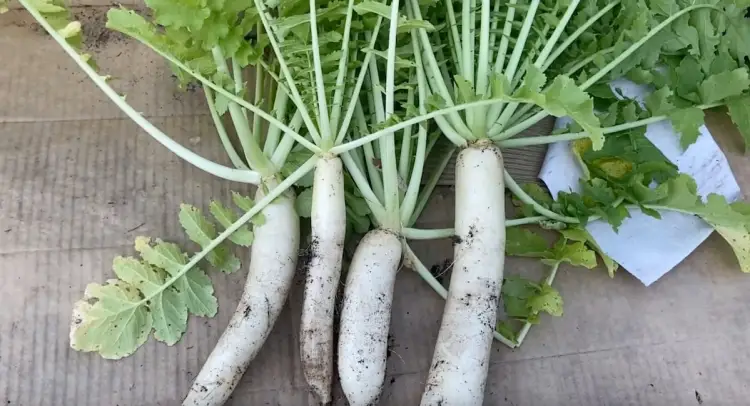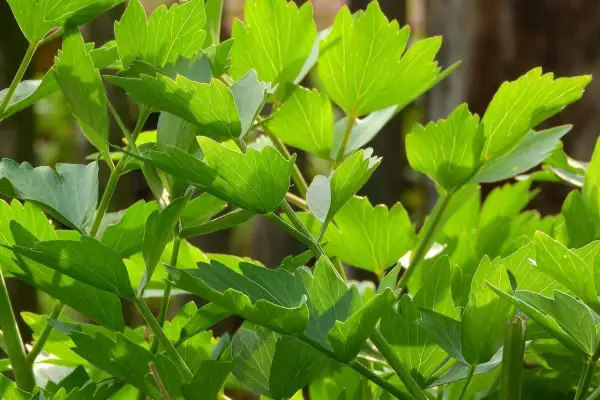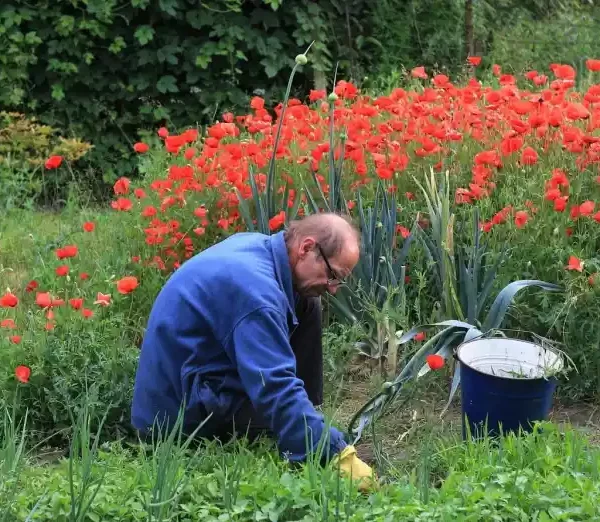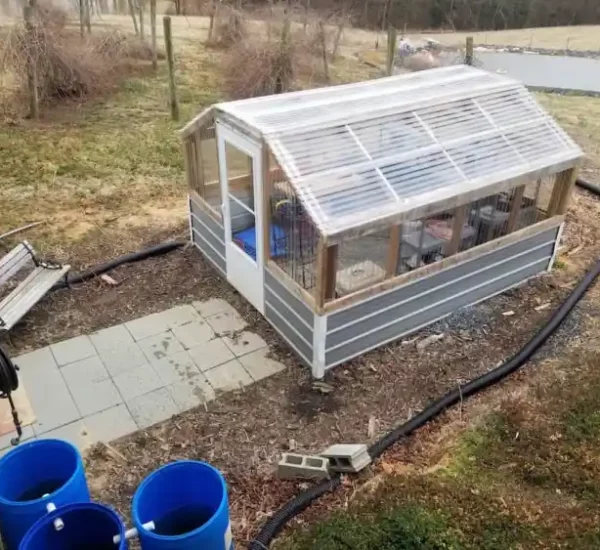Growing herbs and vegetables for Asian dishes offers a rewarding experience, allowing you to cultivate a diverse array of flavors and aromas right in your own backyard or kitchen garden. By selecting the right herbs and vegetables and providing them with proper care, you can enhance the authenticity and freshness of your Asian-inspired culinary creations.
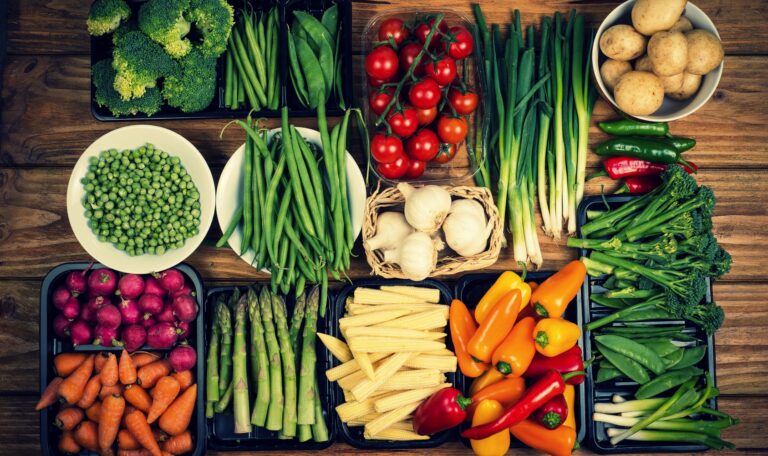
Thai Basil (Ocimum basilicum var. thyrsiflora)
Thai basil is a key ingredient in Thai and Southeast Asian cuisine, prized for its distinctive flavor and aroma. This herb thrives in warm, sunny conditions and well-drained soil, making it an excellent addition to any herb garden or container.
Lemongrass (Cymbopogon citratus)
Lemongrass adds a citrusy, aromatic flavor to many Asian dishes, particularly in Thai, Vietnamese, and Indonesian cuisines. This perennial grass requires full sun and regular watering to thrive, making it a versatile and low-maintenance addition to your garden.
Chinese Chives (Allium tuberosum)
Chinese chives, also known as garlic chives, are commonly used in Chinese and Korean cooking for their mild garlic flavor and crunchy texture. These hardy perennial herbs can be grown in containers or in the ground and prefer well-drained soil and full sun to partial shade.
Thai Chili Peppers (Capsicum annuum)
Thai chili peppers add fiery heat to many Asian dishes, including Thai curries, stir-fries, and dipping sauces. These compact pepper plants can be grown in containers or in the ground and require warm temperatures and plenty of sunlight to produce abundant fruit.
Kaffir Lime Leaves (Citrus hystrix)
Kaffir lime leaves are prized for their aromatic flavor and fragrance in Thai and Southeast Asian cuisine, particularly in curries and soups. This small evergreen tree prefers warm, tropical climates and can be grown in containers indoors or outdoors in frost-free regions.
Vietnamese Coriander (Persicaria odorata)
Vietnamese coriander, also known as rau ram or laksa leaf, is a popular herb in Vietnamese and Southeast Asian cooking, prized for its peppery flavor and aromatic leaves. This herb thrives in moist, well-drained soil and partial shade, making it an ideal addition to herb gardens or containers.
Bok Choy (Brassica rapa subsp. chinensis)
Bok choy, also known as Chinese cabbage, is a versatile leafy vegetable commonly used in stir-fries, soups, and noodle dishes in Chinese cuisine. This fast-growing vegetable prefers cool temperatures and regular watering, making it well-suited for spring and fall growing seasons.
Thai Eggplant (Solanum melongena)
Thai eggplant varieties, such as Thai green eggplant and Thai purple eggplant, are essential ingredients in many Thai curry dishes. These compact eggplant plants require warm temperatures, full sun, and well-drained soil to produce abundant fruit throughout the growing season.
Thai Bird’s Eye Chili (Capsicum annuum)
Thai bird’s eye chili peppers are known for their intense heat and are commonly used in Thai cooking to add spice and flavor to dishes such as Thai papaya salad and green curry. These small, fiery peppers can be grown in containers or in the ground and prefer warm, sunny conditions.
Ginger (Zingiber officinale)
Ginger adds a pungent, spicy flavor to many Asian dishes, including stir-fries, curries, and soups. This tropical perennial plant thrives in warm, humid conditions and can be grown in containers or in the ground in frost-free regions.
Thai Sweet Basil (Ocimum basilicum var. thyrsiflora)
Thai sweet basil, also known as horapa, is a key ingredient in Thai cuisine, prized for its sweet, licorice-like flavor and aroma. This herb prefers warm temperatures, full sun, and well-drained soil, making it an excellent addition to herb gardens or containers.
Chinese Mustard Greens (Brassica juncea)
Chinese mustard greens, also known as gai choy, are commonly used in Chinese cooking for their peppery flavor and tender leaves. These fast-growing leafy vegetables prefer cool temperatures and regular watering to produce succulent greens throughout the growing season.
Thai Mint (Mentha arvensis)
Thai mint, also known as Vietnamese mint or laksa leaf, is a fragrant herb commonly used in Thai, Vietnamese, and Malaysian cuisine for its refreshing flavor. This perennial herb thrives in moist, well-drained soil and partial shade, making it an ideal addition to herb gardens or containers.
Korean Perilla (Perilla frutescens var. crispa)
Korean perilla, also known as sesame leaf or kkaennip, is a popular herb in Korean cuisine, prized for its distinctive flavor and aroma. This annual herb prefers warm temperatures and well-drained soil, making it an excellent addition to herb gardens or containers.
Yardlong Beans (Vigna unguiculata subsp. sesquipedalis)
Yardlong beans, also known as asparagus beans or snake beans, are commonly used in Southeast Asian cooking for their tender texture and mild flavor. These fast-growing vines prefer warm temperatures and well-drained soil and can be grown on trellises or supports to save space in the garden.
Conclusion
Growing herbs and vegetables for Asian dishes offers a rewarding and flavorful experience, allowing you to incorporate fresh, aromatic ingredients into your cooking while adding diversity to your garden or landscape. By selecting the right herbs and vegetables and providing them with proper care, you can enjoy a bountiful harvest of Asian-inspired produce right at home.
What are the essential herbs and vegetables for Asian cooking?
The essential herbs and vegetables for Asian cooking include Thai basil, lemongrass, Chinese chives, Thai chili peppers, kaffir lime leaves, Vietnamese coriander, bok choy, Thai eggplant, Thai bird’s eye chili, ginger, and more.
Can I grow these herbs and vegetables in containers?
Yes, many of these herbs and vegetables can be grown in containers, making them suitable for small gardens, balconies, or indoor growing environments.
What growing conditions do these herbs and vegetables prefer?
Most of these herbs and vegetables prefer warm temperatures, well-drained soil, and plenty of sunlight. However, some may tolerate partial shade or cooler temperatures.
How do I care for Thai basil and prevent it from flowering too early?
Thai basil prefers warm temperatures and regular watering. Pinching off the flower buds as soon as they appear can help prolong the plant’s leaf production and prevent premature flowering.
What are some common pests and diseases that affect these herbs and vegetables?
Common pests and diseases that may affect these herbs and vegetables include aphids, caterpillars, powdery mildew, and fungal diseases. Regular monitoring and proper care can help prevent infestations and diseases.
Can I start these herbs and vegetables from seeds or should I buy seedlings?
Many of these herbs and vegetables can be started from seeds, but some may be easier to grow from seedlings or transplants, especially for beginners or those with limited gardening experience.
How often should I fertilize these herbs and vegetables?
Herbs and vegetables generally benefit from regular fertilization throughout the growing season. Use a balanced fertilizer and follow the manufacturer’s recommendations for dosage and application.
What are some culinary uses for these herbs and vegetables?
These herbs and vegetables are used in a wide range of Asian dishes, including curries, stir-fries, soups, salads, and noodle dishes. They add unique flavors, aromas, and textures to Asian-inspired recipes.
How do I harvest and store these herbs and vegetables for optimal freshness?
Herbs can be harvested as needed by snipping off the leaves or stems with scissors or pruners. Vegetables should be harvested when they reach the desired size and ripeness. Store herbs in the refrigerator or freeze them for long-term storage, while vegetables can be stored in a cool, dry place or refrigerated.
Where can I find seeds or seedlings for these herbs and vegetables?
Seeds and seedlings for these herbs and vegetables can be found at local nurseries, garden centers, farmers’ markets, or online seed suppliers. Be sure to choose reputable sources and select varieties suited to your growing conditions.
- Virginia’s Growing THC Seltzer Craze - June 5, 2025
- Find THC Sodas in Ohio - June 5, 2025
- THC Infused Seltzers to Try in New Jersey - May 19, 2025

